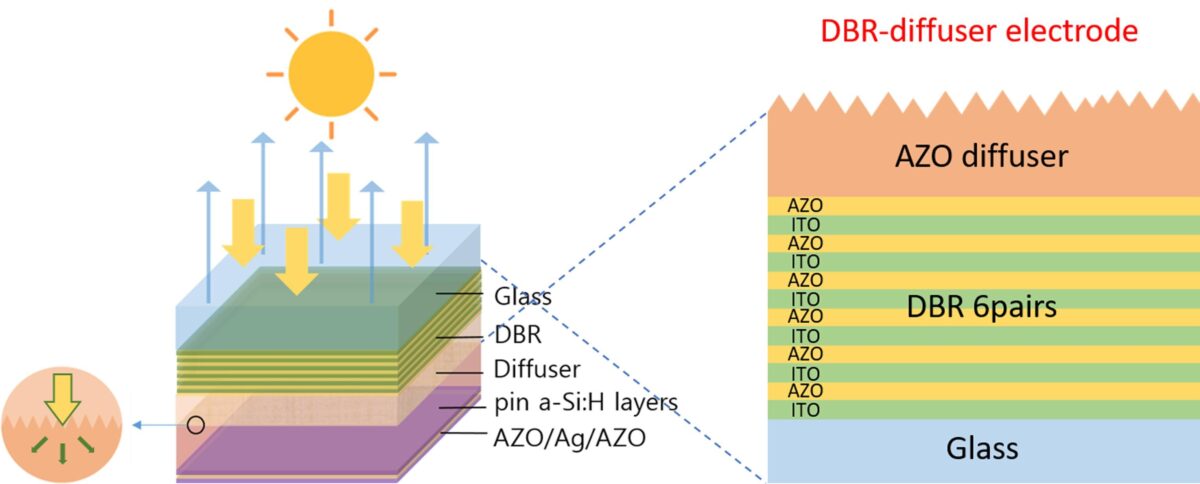South Korean researchers have developed a BIPV cell incorporating a transparent distributed Bragg reflector (DBR) electrode.
The DBRs consist of alternating dielectric layers, commonly serving as reflectors and dielectric mirrors, and their multilayered composition alternates between high and low refractive indices, resulting in customizable reflection spectra.
The DBR structures exhibit a distinct blue hue and use transparent conductive oxides (TCOs) derived from thin-film aluminum-doped zinc oxide (AZO) and indium tin oxide (ITO). This choice of materials reportedly enhances light scattering. The connection between TCOs and the DBR electrode incorporates a diffuser layer, serving as a transparent front electrode.
“The AZO diffuser layer was chemically etched, and the light-scattering structure was controlled by varying the etching time,” the researchers said. “As the etching time increased, the reflectance spectra tended to decrease over the entire wavelength range, owing to the textured surface of the diffuser layer.”
The researchers said that the textured PV cells exhibit greater intensity in external quantum efficiency (EQE) across the entire wavelength spectrum when contrasted with flat PV cells. EQE signifies the efficiency of power conversion, calculated by considering all incident sunlight or photons.
“The absorption of PV cells was improved by enhanced light scattering with a higher etched DBR-diffuser electrode, but the spectral response of the EQE decreased in the highest light scattering structure of 150 second,” explained the scientists.
They said that they will now investigate these interfacial defects in solar cells with increased light scattering.
“The optimization results of the DBR electrode and diffusion layer will be applied not only to a-Si:H but also to other colored thin film solar cells and will help BIPV to research utility and aesthetics,” they said.
They described the cell technology in “Surface modification of color-clarifying layer in transparent conductive oxide based distributed Bragg reflector-diffuser electrode for building-integrated photovoltaics,” which was recently published in Solar Energy. The research team includes scientists from the Korea Institute of Materials Science, the University of Science and Technology (UST), and Pusan National University.
This content is protected by copyright and may not be reused. If you want to cooperate with us and would like to reuse some of our content, please contact: editors@pv-magazine.com.




By submitting this form you agree to pv magazine using your data for the purposes of publishing your comment.
Your personal data will only be disclosed or otherwise transmitted to third parties for the purposes of spam filtering or if this is necessary for technical maintenance of the website. Any other transfer to third parties will not take place unless this is justified on the basis of applicable data protection regulations or if pv magazine is legally obliged to do so.
You may revoke this consent at any time with effect for the future, in which case your personal data will be deleted immediately. Otherwise, your data will be deleted if pv magazine has processed your request or the purpose of data storage is fulfilled.
Further information on data privacy can be found in our Data Protection Policy.